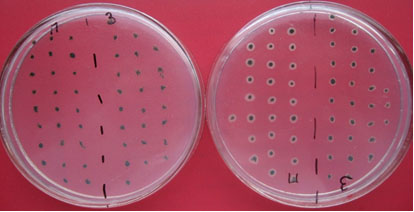Soil biotest results using Azotobacter bacteria: interpretation problems and possible solutions
DOI:
https://doi.org/10.31251/pos.v4i3.154Keywords:
Azotobacter; environment assessment; experimental stress; leached chernozem; coal mining spoils; cryolithozone; microbial landscapeAbstract
The aim of the study. The Azotobacter genus is a well-known bioassay for testing the soil environment quality. A large number of these bacteria is considered as evidence of the ecological well-being of a soil. However, a high number of these microorganisms was found in disturbed ecosystems, which means there is a problem of how to interpret the results of the biotest. Therefore the aim of the study was to clarify the causes of this problem and suggest a possible way to solve it.
Location and objects of the study. The study was conducted in West Siberia (Russia) in the Priobskoe plateau (54°53'13.5"N, 82°59'36.7E"). Leached сhernozem with different content of organic matter (mortmass) was studied under the following treatments: 1) permanent fallow, 2) wheat cultivation, annual removal of straw from the field + summer fallow, 3) wheat + left straw + summer fallow, 4) wheat +left straw + green manure fallow, 5) grassland. The content of N-NO3, respectively, was equal to 50, 10, 15, 5, 0 mg/kg. Another object was a site at the mining and processing plant "Denisovsky" in South Yakutia (Russia) (56°46'20.23"N, 124°51'06.95"E). Abandoned for a long time (30 years) after coal mining spoils were studied in two variants: without plants and with well-developed vegetation cover. Total SOC content was 1.8 and 5.7%, N – 0.3 and 0.4 %, respectively.
Methodology. The direct sowing of single soil aggregates onto the N-free medium containing glucose as C-source was used to cultivate Azotobacter. Glucose (10 mg/g soil) was added to the soil to activate Azotobacter growth. A live culture of bacteria was introduced into the soil at a dose of 1 ml/g to check the viability of Azotobacter in experimental soils.
Main results. The status of the microbial community in situ was observed on microbial landscapes obtained by exposing slides in the undisturbed soil for 30 days. The overgrowth of soil lumps in the specified range of options was 0–80–40–0–0% and after glucose addition – 100–80–80–0%. The activation of Azotobacter growth after glucose addition was inversely proportional to the C: N ratio (between the mortmass and the mineral nitrogen). Live Azotobacter culture under grassland developed 2.5 times slower in comparison with the fallow. Similar patterns were found in the study of the soils developed on the coal mining spoils. Activation of Azotobacter growth by glucose (response to stress) was more pronounced in soils with apparently less favorable environment for bacteria.
Conclusion. The reason behind misleading interpretation of Azotobacter biotest results was that the original purpose of the test was to assess fertility of arable soils. This role of the indicator bacterium was previously underestimated. It is known that the arable soil belongs to the category of disturbed ones, and the abundance of Azotobacter may indicate instability in the microbial community of the soil. To expand the capabilities of the biotest, the authors propose to supplement the test with a procedure for evaluating the Azotobacter growth response to experimental stress, e.g. C-substrate addition.
Downloads

Downloads
Published
How to Cite
Issue
Section
License
Copyright (c) 2021 The Journal of Soils and Environment

This work is licensed under a Creative Commons Attribution 4.0 International License.






